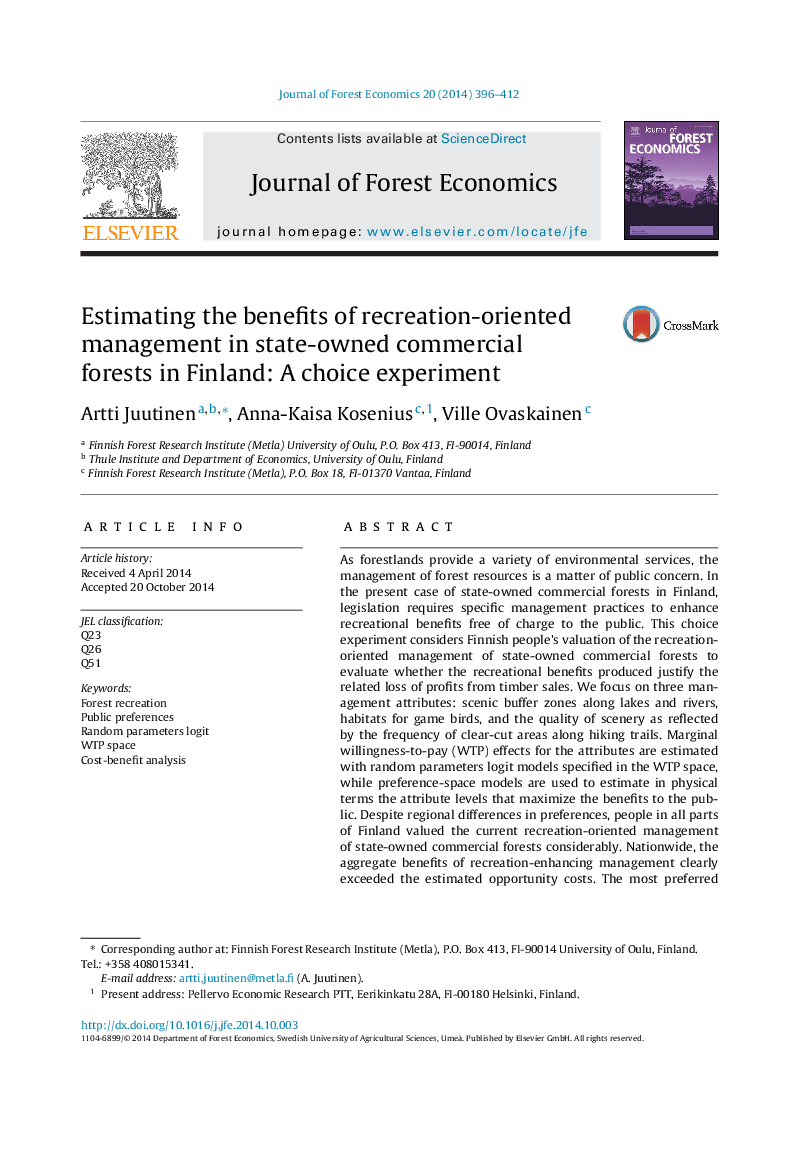| Article ID | Journal | Published Year | Pages | File Type |
|---|---|---|---|---|
| 91789 | Journal of Forest Economics | 2014 | 17 Pages |
As forestlands provide a variety of environmental services, the management of forest resources is a matter of public concern. In the present case of state-owned commercial forests in Finland, legislation requires specific management practices to enhance recreational benefits free of charge to the public. This choice experiment considers Finnish people's valuation of the recreation-oriented management of state-owned commercial forests to evaluate whether the recreational benefits produced justify the related loss of profits from timber sales. We focus on three management attributes: scenic buffer zones along lakes and rivers, habitats for game birds, and the quality of scenery as reflected by the frequency of clear-cut areas along hiking trails. Marginal willingness-to-pay (WTP) effects for the attributes are estimated with random parameters logit models specified in the WTP space, while preference-space models are used to estimate in physical terms the attribute levels that maximize the benefits to the public. Despite regional differences in preferences, people in all parts of Finland valued the current recreation-oriented management of state-owned commercial forests considerably. Nationwide, the aggregate benefits of recreation-enhancing management clearly exceeded the estimated opportunity costs. The most preferred levels of management attributes were slightly above the current levels, suggesting an increase in the provision of recreational services when not considering the associated costs.
